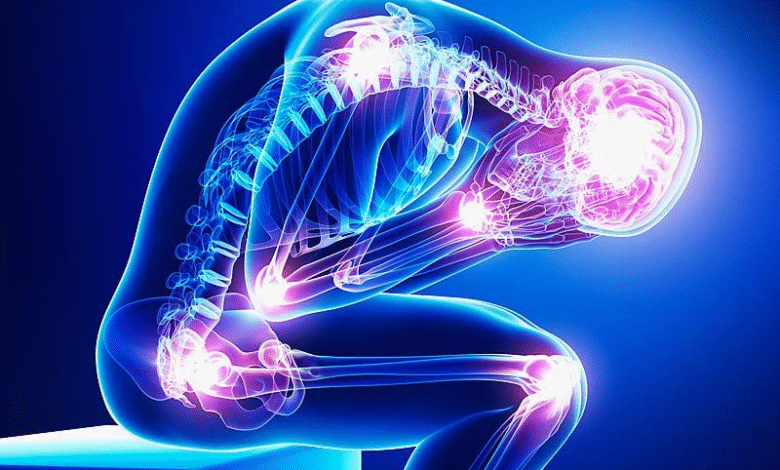Innovative Non-Invasive Solutions for Chronic Pain Management
The landscape of chronic pain management is evolving at an unprecedented pace, bringing genuine hope to millions who have struggled with persistent discomfort.

Key Takeaways
- Non-invasive treatments are transforming chronic pain management, offering safe and effective alternatives to opioids for a wide range of patients.
- Recent breakthroughs include acupuncture, vagus nerve stimulation, focused ultrasound therapy, and the creation of new non-opioid medications—each contributing to a dynamic shift away from reliance on narcotics.
- Personalized and holistic pain management solutions are becoming increasingly accessible. Next-generation technologies enable highly adaptive and patient-specific treatment plans built on real-world feedback.
- Staying informed about emerging therapies and working closely with healthcare professionals is crucial for safely integrating innovative treatments into the everyday routines of chronic pain sufferers.
Understanding Chronic Pain
Chronic pain is a persistent and often debilitating medical issue that affects millions of individuals worldwide, significantly impacting not only daily function but also emotional and psychological well-being. This type of pain extends far beyond the routine aches or discomforts experienced by healthy individuals, interfering with daily activities like work, sleep, and relationships. It is typically defined as pain that persists or recurs for longer than three months—well beyond the expected period of routine healing—and often serves no proper biological function. Chronic pain can originate from a variety of underlying conditions, such as arthritis, nerve injuries, musculoskeletal disorders like fibromyalgia, or can even remain unexplained despite thorough evaluation by medical professionals. The wide-ranging causes of chronic pain often mean that it manifests differently from person to person, complicating both diagnosis and treatment approaches.
While traditional treatments like opioids have long been a standard recourse for people suffering from intense and unrelenting discomfort, these medications carry formidable risks. Dependency and tolerance can develop rapidly, leading to increased dosing and, in some cases, dangerous patterns of misuse. Over time, patients may find that opioids offer diminishing relief while producing side effects such as drowsiness, constipation, cognitive impairment, or breathing difficulties. The ongoing opioid crisis highlights the urgent need for safer and more effective alternatives. As a result, patients and healthcare practitioners have grown increasingly interested in comprehensive pain management options, including those found through dedicated resources like neuromodulation educational resources. These resources offer a deeper understanding of advanced non-invasive therapies, contributing to better outcomes and patient empowerment and providing clinicians with critical knowledge to tailor solutions for individual needs.
Successfully managing chronic pain requires more than just masking its symptoms with medication. Instead, a holistic and multidisciplinary treatment strategy is often most effective. This approach frequently encompasses medical care, physical and occupational therapy, mental health support, and, more recently, innovative non-invasive treatments that address chronic pain’s biological and psychological aspects. Addressing the underlying causes and symptoms, such strategies focus on improving quality of life, restoring functionality, and helping individuals regain control over their health. Education, emotional support, and active patient participation are vital to ensure sustained improvement, especially given the chronic, relapsing nature of many pain conditions.
Emerging Non-Invasive Treatments
Recent advances in medical research have introduced several non-invasive therapies that offer promising results and renewed hope for chronic pain sufferers. The primary benefit of these treatments lies in their ability to target pain at its biological roots without requiring surgical intervention or exposing patients to the long-term risks associated with narcotic medications. These options include established modalities backed by modern evidence and new technologies designed for precision and safety.
Acupuncture
Acupuncture is an ancient therapeutic practice rooted in traditional Chinese medicine, and its effectiveness is now being validated by modern clinical science. Especially for nerve-related pain conditions, such as sciatica caused by herniated discs, acupuncture offers a safe alternative for those seeking drug-free pain relief. Chronic pain patients who underwent a series of ten acupuncture sessions experienced considerable improvement in their symptoms, and in many cases reported feeling better for months or even up to a year afterward. This demonstrates the therapy’s potential for delivering long-term benefits without medication dependency or significant side effects commonly found with pharmaceuticals. The gentle insertion of wonderful needles at specific points stimulates the body’s pain control and healing mechanisms, encouraging local and systemic changes that reduce discomfort.
Vagus Nerve Stimulation (VNS)
Traditionally utilized as a treatment for epilepsy, vagus nerve stimulation (VNS) delivers gentle electrical pulses to the vagus nerve, effectively modulating pain and inflammatory signals throughout the body. Emerging evidence shows that VNS can help manage not only neurological conditions but also inflammatory disorders and various forms of chronic pain. This promising discovery opens the door to new treatments for conditions otherwise resistant to standard care. The potential of VNS for autoimmune and chronic pain conditions is gaining traction in scientific circles, as it targets underlying pathways rather than merely masking discomfort. Unlike medications that dull pain perception or act broadly on the nervous system, VNS offers a selective and reversible way to influence pain processing, minimizing the risk of systemic side effects.
Focused Ultrasound Therapy
Focused ultrasound therapy represents a leap forward in non-invasive pain management. For example, transcranial focused ultrasound (tFUS), developed at Carnegie Mellon University, allows precise targeting of neural circuits associated with pain processing without incisions or exposure to systemic drugs. The TFUS system modulates abnormal pain hypersensitivity with high spatial accuracy and depth, enabling relief for patients with chronic pain conditions that defy conventional treatment. These advances hold potential to change the approach to pain therapy for many people living with persistent symptoms by offering non-destructive, adjustable therapy.
Advancements in Non-Opioid Medications
Beyond device-based therapies, the pharmaceutical field is making headway in the development of non-opioid medications that are both safe and effective for managing moderate-to-severe chronic pain. Such advances address a critical gap for patients unable or unwilling to use narcotic prescriptions due to risk factors, intolerance, or difficult past experiences. The recent FDA approval of suzetrigine (Journavx)—a drug that targets specific sodium channels in pain-sensing neurons—exemplifies the innovative approach researchers are using now. This medicine acts selectively on pain pathways, producing effective relief while minimizing central nervous system side effects associated with opioids. These medications represent a substantial step forward for people who have struggled to find relief or who want to avoid potential complications from chronic opioid use. The growing portfolio of non-opioid drugs supports better quality of life by controlling symptoms, improving daily function, and reducing the risk of opioid misuse, abuse, and dependency.
Personalized Pain Management
The era of generalized, one-size-fits-all pain therapies is steadily being replaced by advances emphasizing tailored, adaptive care for each individual. For example, the wireless implant being researched at the University of Southern California utilizes ultrasound therapy and artificial intelligence to monitor patients’ pain levels in real time and administer targeted relief as needed. This technology reduces the reliance on invasive surgical procedures and chronic medication regimens, giving patients more autonomy while refining outcomes. Broader adoption of personalized medical devices and data-driven feedback allows pain management plans to be customized for each patient’s unique biofeedback profile, history, and daily experiences. Personalization vastly improves comfort and daily function. It gives people with chronic pain the tools to advocate for their care, communicate effectively with clinicians, and participate actively in their treatment journey, leading to more meaningful and lasting relief.
Integrating Non-Invasive Treatments into Daily Life
Making the most of non-invasive solutions for chronic pain requires a proactive and informed approach. Here are some key strategies for incorporating new therapies into everyday routines to maximize benefits and minimize risks:
Consult Healthcare Providers: Before embarking on any new therapy, it’s vital to have an open dialogue with a trusted healthcare professional. Based on your diagnosis, current symptoms, and medical history, discuss the suitability of acupuncture, neuromodulation devices, VNS, or focused ultrasound. This individualized evaluation ensures you pursue the safest and most applicable options, avoiding unnecessary complications.
Stay Informed: Review trusted medical sources, attend online or in-person pain management workshops, and join peer support groups. Staying informed about the latest research empowers you to make thoughtful healthcare choices and advocate for innovative care options suited to your unique needs.
Adopt a Holistic Approach: No single therapy will likely offer complete relief for most people. Instead, integrate non-invasive treatments within a broader strategy considering nutrition, appropriate physical activity, mindfulness techniques, cognitive-behavioral therapy, and stress reduction methods. This holistic approach supports body and mind, contributing to sustained pain management and healthier living overall. Collaboration among providers—such as physicians, therapists, psychologists, and wellness coaches—can ensure all aspects of your health are addressed.
Conclusion
The landscape of chronic pain management is evolving at an unprecedented pace, bringing genuine hope to millions who have struggled with persistent discomfort. Thanks to the rise of non-invasive interventions, smarter medications, and personalized medical technologies, patients now have several credible and effective alternatives to the traditional risks of surgery or long-term opioid use. By working in partnership with specialized healthcare professionals, remaining vigilant about new scientific advances, and prioritizing a holistic approach, individuals living with chronic pain can forge a path to meaningful relief, renewed functionality, and a significantly improved quality of daily life.







